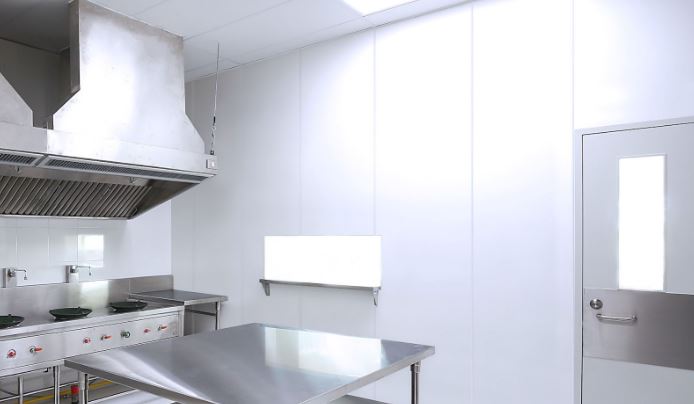Antibacterial vs antimicrobial wall sheeting
Bacteria, fungi, and viruses can spread like wildfire when proper hygiene controls are ignored, leading to cases of infectious outbreaks between humans as well as the contamination of foodstuffs.
We all must do our part to stop the spread of germs by following basic hygiene practices. But inhibiting the growth of bacteria on high contact surfaces before it even has the chance to spread is one of the most effective solutions available.
Regular cleaning of surfaces goes a long way in the fight against harmful bacteria, but we can take things one step further by installing surfaces which are specifically designed and treated to actually inhibit bacterial growth.
Advances in wall sheeting technology have led to superior infection control solutions for use in settings such as schools, hospitals, kitchens and laboratories. There are now a range of antibacterial and antimicrobial wall sheeting products available to architects and project managers who are responsible for meeting certain hygiene specifications when working on a new construction.
But what are the differences between antibacterial wall sheeting solutions and antimicrobial ones? In short, they aren’t worlds apart and the terms are often used interchangeably. But antimicrobial technology has some key advantages over antibacterial alternatives. Let’s take a look at how each works.
Antibacterial Wall Sheeting:
Antibacterial surfaces work to inhibit the growth of bacteria, which usually results in the elimination of up to 99% of harmful organisms. The coating applied to the sheeting will trap bacteria and prevent them from multiplying.
Antimicrobial Wall Sheeting:
Antimicrobial sheeting delivers the same level of protection against bacteria as antibacterial products, but offers a more comprehensive infection control solution.
Unlike antibacterial sheeting, antimicrobial sheeting also inhibits the growth of mould, fungi and viruses, not just bacteria. Mould and fungal infections include the likes of Aspergillus niger. This is a type of mould which can sometimes be attributed to the cause of some cases of pneumonia. It is also the causative agent of ‘black mould’ on the outsides of certain foods.
Viruses inhibited by antimicrobial sheeting include more serious pathogens like the common cold, flu, Influenza, MRSA and E.Coli.
One of the most commonly used ingredients in antimicrobial sheeting are silver ion* particles. Silver has long been known to suppress and kill a broad range of microorganisms at a molecular level. This is why materials containing silver-ions are used to control bacterial growth in a variety of medical applications, including dental work, catheters and the healing of burn wounds. So it certainly makes sense to incorporate the use of these germ-fighting particles in wall sheeting too!
Because of the superior performance that antimicrobial sheeting offers in terms of preventing the spread of germs, it is now a widely specified building material in high traffic areas - from the corridors of primary schools to the walls of operating theatres.
To learn more about AM 360’s range of antimicrobial wall sheeting solutions, click here to get in touch. We’d be happy to answer any questions you may have.
Please note: All of our products contain ionic silver, unlike other products on the market which contain nano silver. According to researchers at Rice University, in order for silver to be effective in killing bacteria, it has to be in its ionised form. Nano silver is therefore benign in the presence of microbes.



